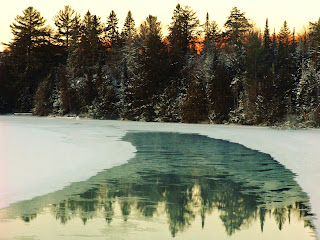
Thwarted on two previous occasions I was elated when I finally located the grave of Captain John Dennison, an early pioneer who moved his family to Opeongo Lake around 1871 and there established farms, over two decades before Algonquin came into existence. Life was a constant struggle and not without tragedy; in 1877 two grandchildren died and were buried on the property. In June 1881, at the age of 82, Captain Dennison also died after a fatal encounter with a black bear. He was buried close to the children, his grave enclosed within a cedar rail fence and marked with a simple copper plaque. The surviving family members departed in 1882 and a century later a memorial was added by his grave, commemorating the deaths of all three members.










.JPG)

























